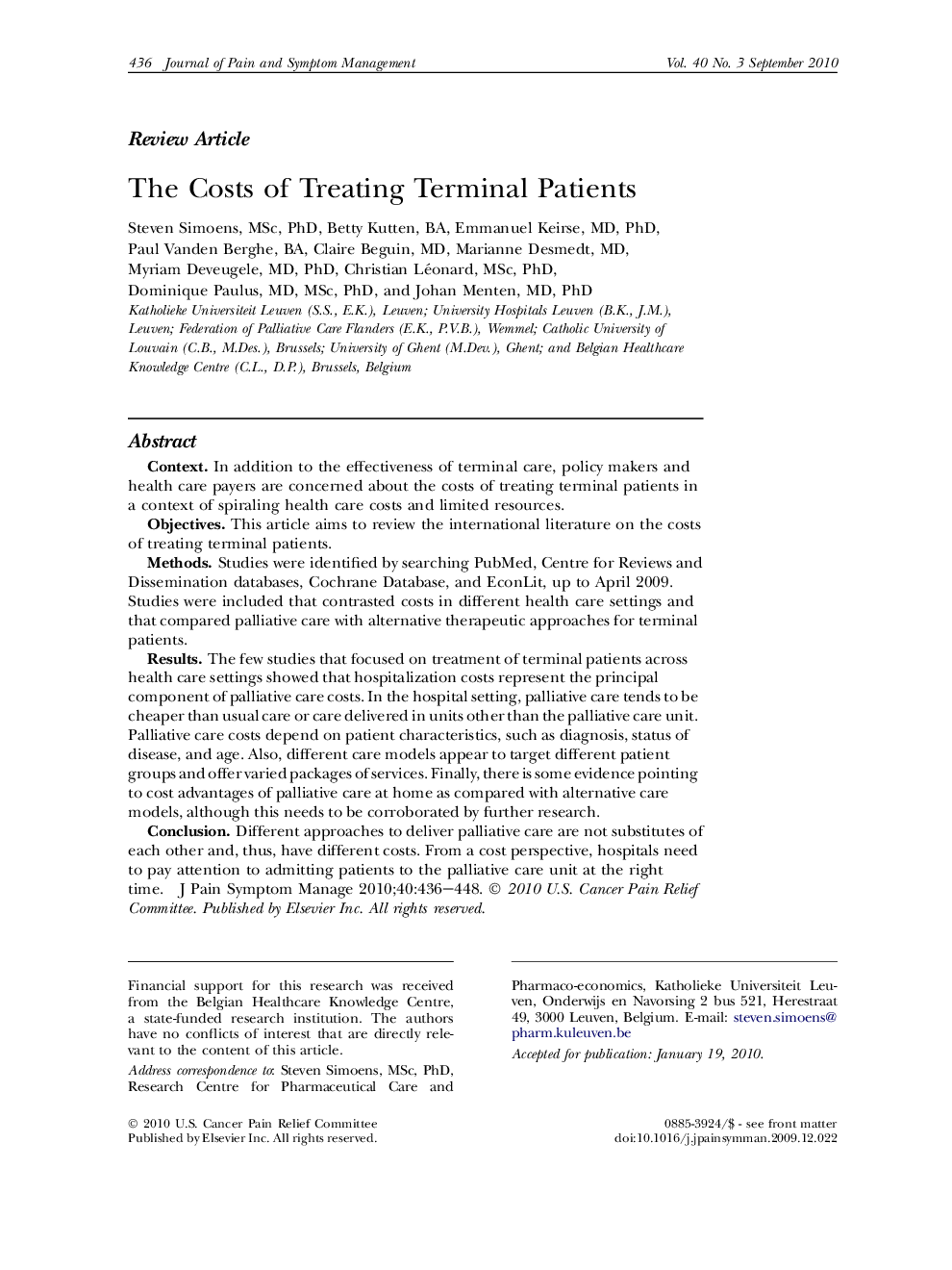| Article ID | Journal | Published Year | Pages | File Type |
|---|---|---|---|---|
| 2736255 | Journal of Pain and Symptom Management | 2010 | 13 Pages |
ContextIn addition to the effectiveness of terminal care, policy makers and health care payers are concerned about the costs of treating terminal patients in a context of spiraling health care costs and limited resources.ObjectivesThis article aims to review the international literature on the costs of treating terminal patients.MethodsStudies were identified by searching PubMed, Centre for Reviews and Dissemination databases, Cochrane Database, and EconLit, up to April 2009. Studies were included that contrasted costs in different health care settings and that compared palliative care with alternative therapeutic approaches for terminal patients.ResultsThe few studies that focused on treatment of terminal patients across health care settings showed that hospitalization costs represent the principal component of palliative care costs. In the hospital setting, palliative care tends to be cheaper than usual care or care delivered in units other than the palliative care unit. Palliative care costs depend on patient characteristics, such as diagnosis, status of disease, and age. Also, different care models appear to target different patient groups and offer varied packages of services. Finally, there is some evidence pointing to cost advantages of palliative care at home as compared with alternative care models, although this needs to be corroborated by further research.ConclusionDifferent approaches to deliver palliative care are not substitutes of each other and, thus, have different costs. From a cost perspective, hospitals need to pay attention to admitting patients to the palliative care unit at the right time.
